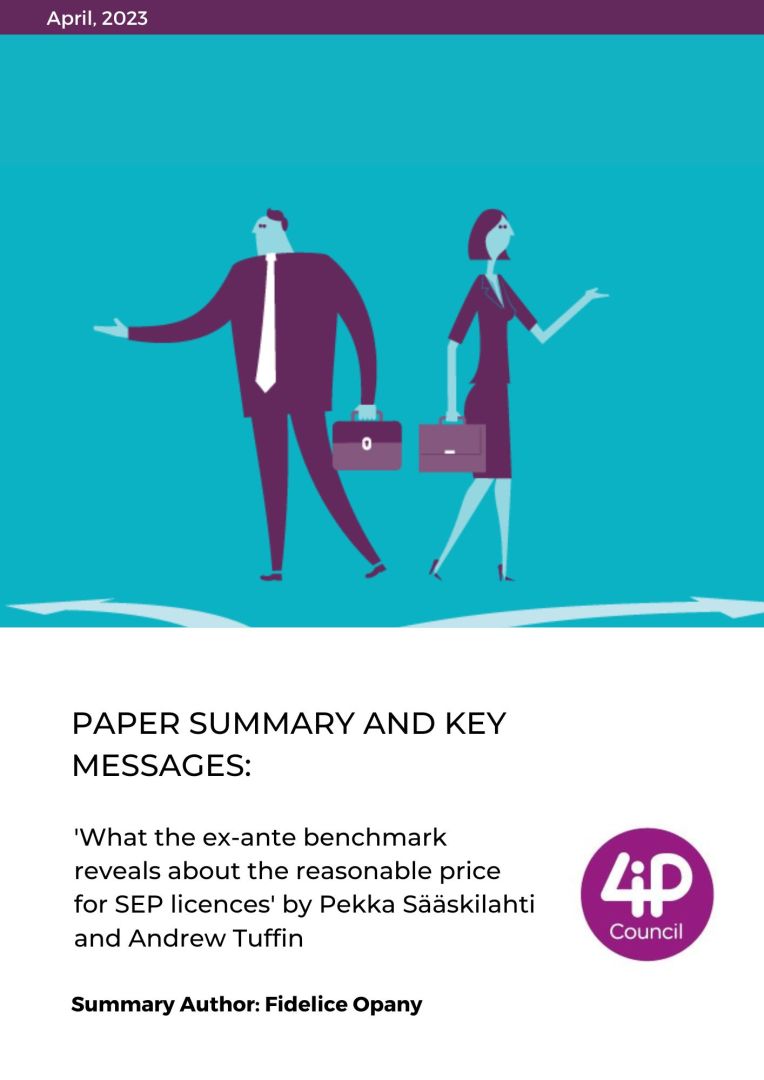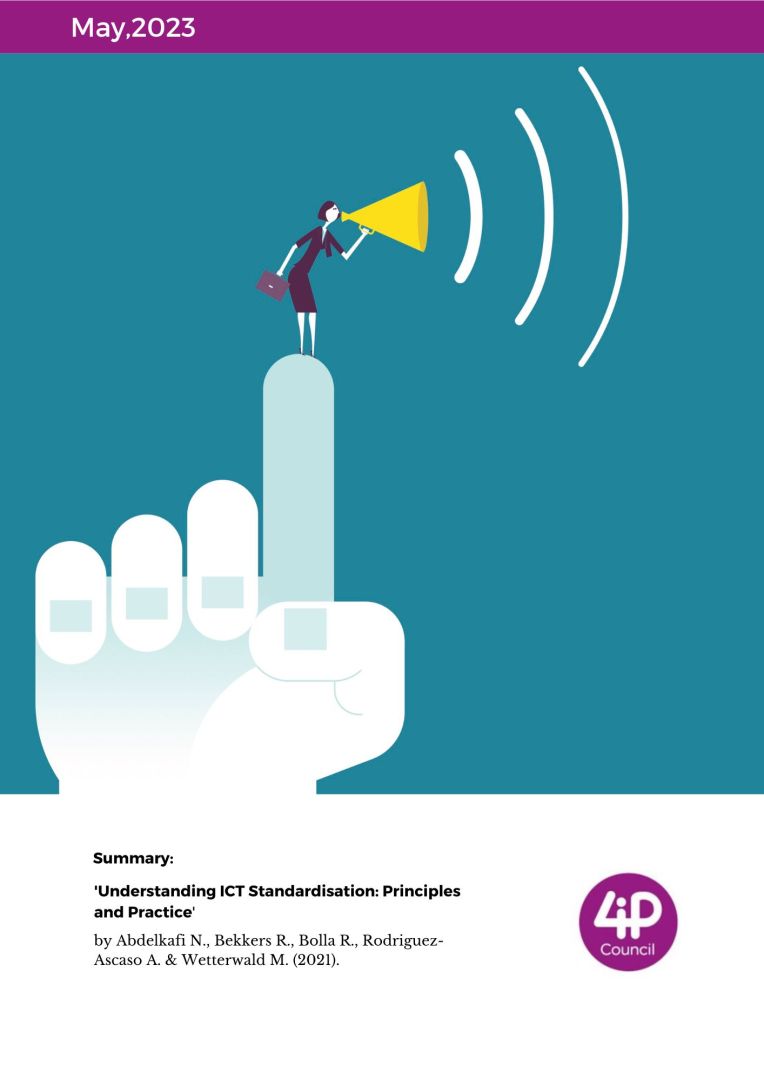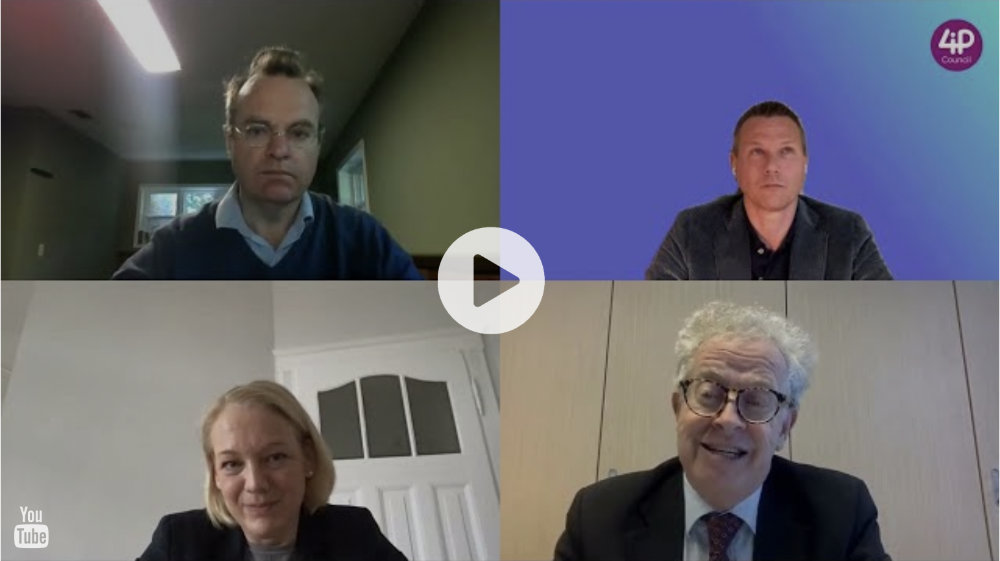Abstract:
This article analyses the ex-ante benchmark, and what it tells about the relationship between the value of standardised technologies and the prices for standard essential patents that we should consider reasonable. The article explains that the ex-ante benchmark itself is not faulty. Rather, the fault is in the timing. In the “standard” ex-ante benchmark, the price is determined before implementers are locked-in, but after innovators are. An innovator could not walk away from an ex-ante negotiation: its costs are sunk, and it has no commercial alternatives – implementers will co-ordinate around whichever technology is adopted into the standard. It must accept whatever the benchmark offers, even where that price is little or none. The double ex-ante benchmark corrects this imbalance, by establishing the price that parties would negotiate before either side is locked-in. As such, it provides incentives for both innovators and implementers to participate in standards, and guides how the price of standard essential patent licenses should be set.
Key takeaways:
I. Ex ante competition is key to creating more value
Standards create value in two ways: (i) for the benefits of the functionality they enable, and (ii) for the benefits of co-ordinating implementers around the same technology. However, once a standard is established, the benefits of co-ordination may hinder the emergence of superior technology. Standard Development Organisations overcome this hurdle by enabling ex-ante competition whereby technologies with similar functionality compete for inclusion in the standard. Ex-ante competition promotes both sources of value (i) the value of co-ordination, since implementers maintain a single technology to co-ordinate around, and (ii) the value of better functionality, as SDOs make the market contestable for innovators which promotes the quality of technologies that compete for standards.
II. Negotiating licences ex-post can distort parties’ bargaining power
The relationship between value and price is at the centre of disputes regarding licensing of standard essential patents (“SEP”). The pricing of SEP licenses typically occurs ex-post i.e., after the technology is adopted in the standard, implemented and value has been derived.
That distorts parties’ bargaining position. Normally, a licensee can walk away from a licence negotiation in favour of alternatives that offer better value for money. The implementer of a successful standard can’t do that, without sacrificing the benefits of co-ordination. Similarly, a licensor can normally walk away from a licence negotiation in favour of better alternatives, playing rival licensees against each other in a bidding war, or by implementing its own technology exclusively. But a licensor of SEPs can’t do either.
The ex-ante benchmark corrects the distortion for licensees, but it exacerbates the distortion for licensors.
III. The Ex-ante benchmark seek to prevent power against licensees, but increases power against licensors
In the ex-ante benchmark, the reasonable price of the license is “the competitive price that the licensee would have paid immediately before the technology’s inclusion in the standard.” The price is the incremental value of the best technology vis-à-vis the next best alternative technology, plus the price that the licensor of the next best available technology would accept.
That benchmark sets a competitive price for a licence at zero, or close to it, when rival technologies offer functionality with the same, or similar, value. The reason is based on the following logic: had there been negotiations immediately before the standard was set, the rival licensors must outbid each other for inclusion, as the loser will earn nothing outside the standard. That competition drives the competitive price to the value of the incremental benefit that the best technology offers, as the next best alternative would be available for nothing. Thus, the ex-ante benchmark can set a price that would have discouraged both parties from innovating and competing in the first place, had they known that is how the price would be set.
IV. How can we correct the ex-ante benchmark?
The flaw in the ex-ante benchmark is in the timing. In the “standard” ex-ante benchmark, the negotiation is entered into before standardisation but after the licensor has incurred development costs and lost its commercial alternatives to the standard. Since the innovator expects to get little or no reward when faced with close competition as explained above, it would only compete ex-ante in two scenarios: (i) where the incremental value would be more than its costs either because the rival technologies are of no value, or because the value of its technology is way above its competitors, or (ii) where the firm is vertically integrated and does not rely on licensing to recoup its investment costs. As such, the “standard” ex-ante benchmark discourages competition to innovate.
The remedy for this flaw is the “double ex-ante” benchmark whereby parties negotiate before either party is irreversibly committed. This benchmark provides the right incentives. First, in the event that the reward is less than the development costs, a licensor would walk away from the negotiation. And, although a bidding war between innovators in a double ex-ante benchmark would compete away profits, it would not undercut the incentive to innovate entirely – because the expected reward could not be less than the development costs. Second, since the licensee would be unwilling to pay more than the value of the technology, a licensee cannot be held up. Third, competition compels innovators to add more value than their peers, devising technologies that offer greater benefits, or cheaper ways to deliver those benefits.
V. What the double ex-ante principle tells us about reasonable prices
(i) The competitive price falls in a range. This range has a ceiling (because licensors cannot demand more than the economic value of the technology) and a floor (because the licensor cannot earn a price less than it would have earned before incurring the development costs). The competitive price is somewhere between the floor and the ceiling.
(ii) The competitive price that the licensee is willing to pay is influenced by the product market, not the licensing level. For instance, since the value that cellular technology adds to a phone differs from that of a fridge, the price depends on the value the technology adds to the individual products.
(iii) The economic value that the technology adds is not pegged on the licensing level.






